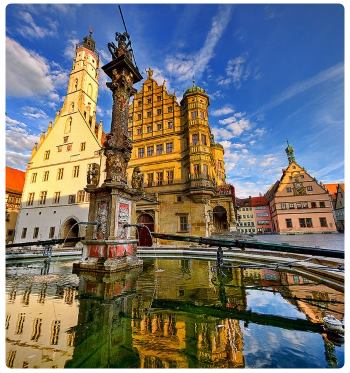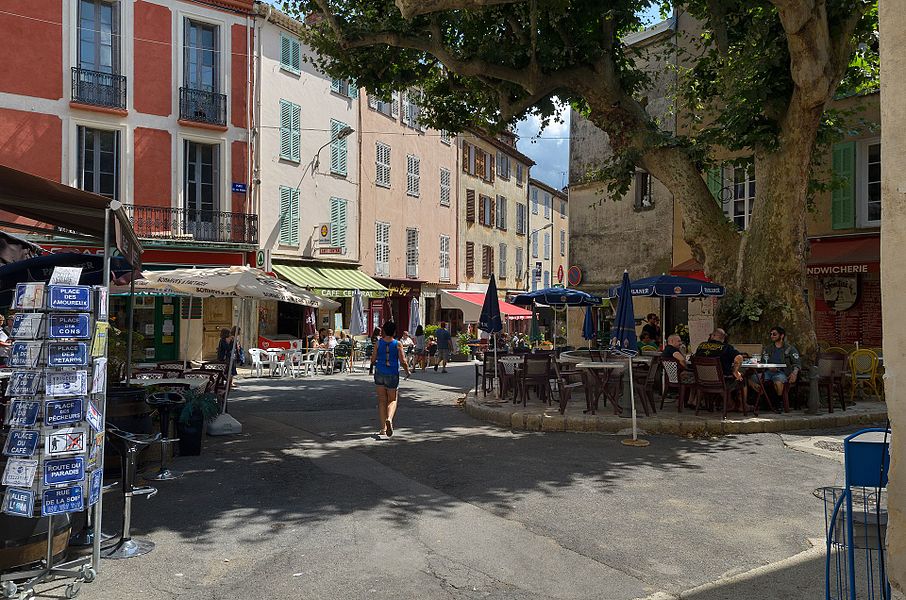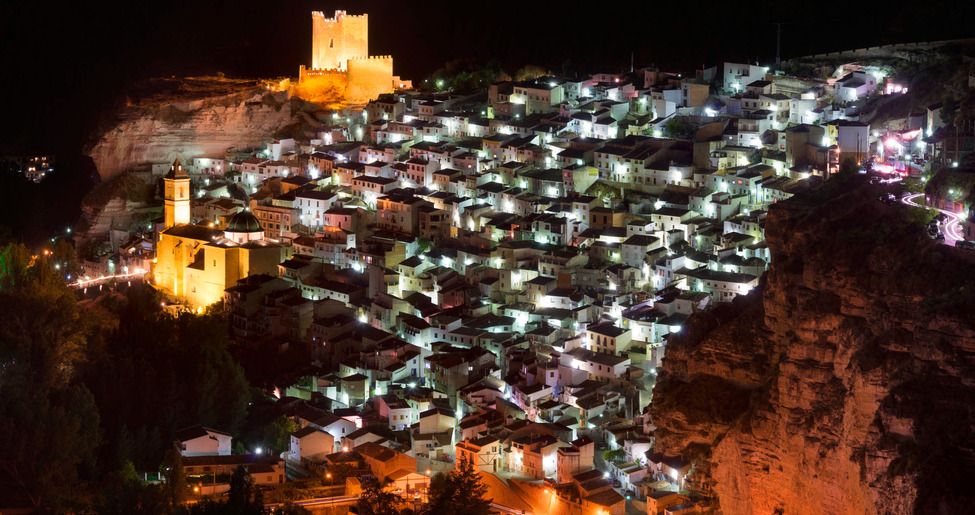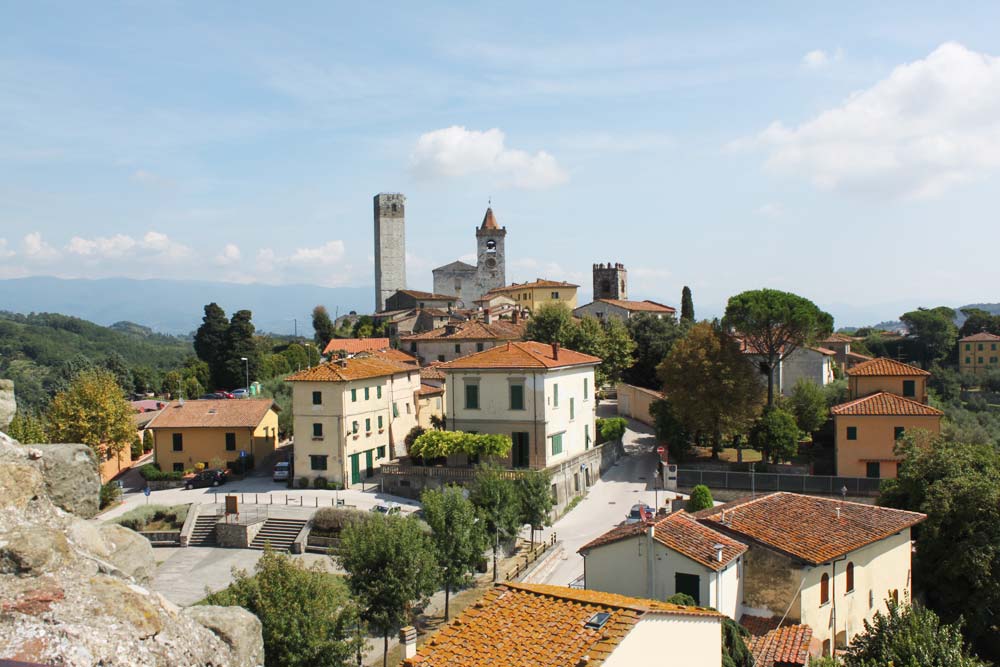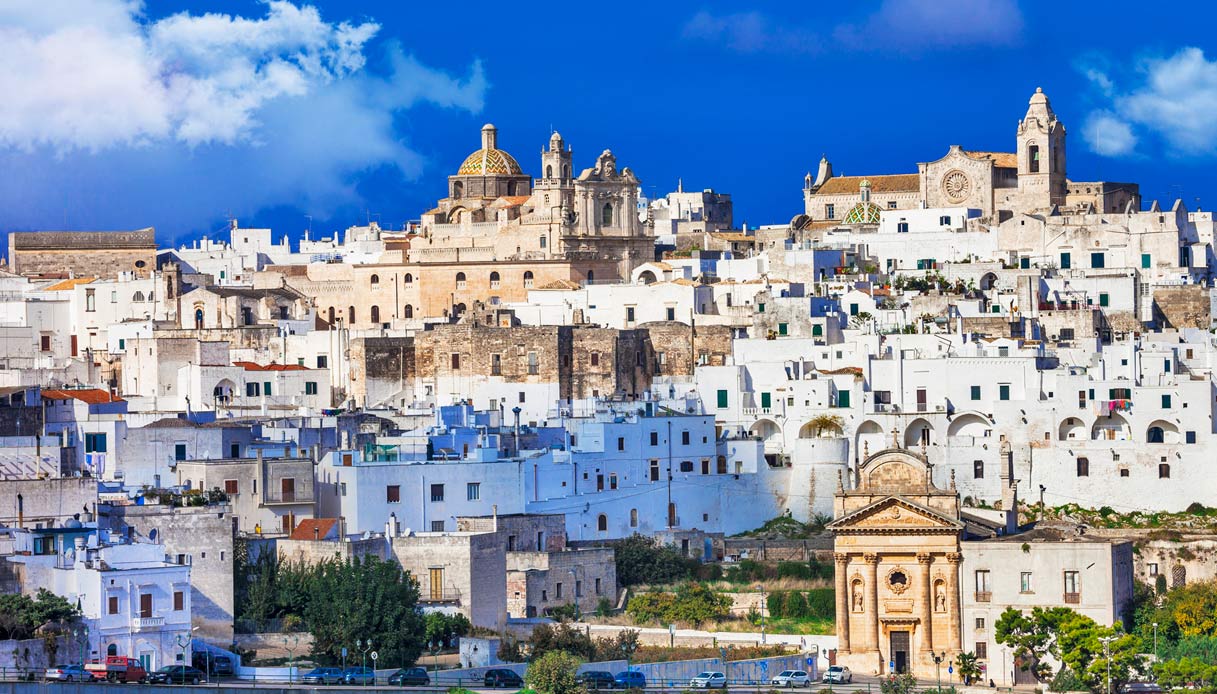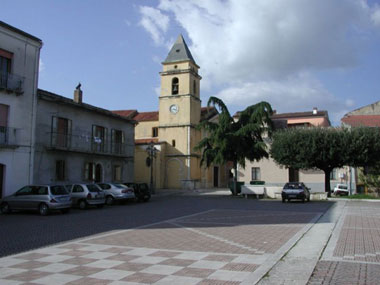Among the many towns in Bavaria, and in particular on the Romantic Road, the jewel of medieval art, Rothenburg ob der Tauber (Rothenburg above Tauber), stands out for its beauty and charm. The city has about 13,000 inhabitants and boasts a large number of hotels, guest houses and restaurants, making it one of Germany’s largest tourist destinations.
Do not miss the Marktplatz (market square), which has always been the main place of city life thanks to the presence of the Rathaus. The large Town Hall building is characterized by two different architectural styles: a part dates back to the Gothic period while the main facade on the Marktplatz is Renaissance. Also worth seeing is the Baumeisterhaus, which was built in 1596 as the residence of the city architect.
The main street of Rothenburg is Herrngasse (Lords’ Street), which connects the Marktplatz with the Burggarten (castle gardens). It is a typical street of a Bavarian village: elegant houses with facades made of different styles and colors, balconies full of flowers with bright colors and many shops. Among the churches is to report the Jakobskirche (Church of St. James) which is the largest and most important of the city. The construction lasted almost 100 years while the solemn consecration dates back to 1448. The exterior of the church, with two high bell towers, and the interior, sober and severe, are in late Gothic style.
The origin of the town dates back to the 10th century when the castle of the Counts of Rothenburg was built; throughout the 11th century Rothenburg enjoyed a very flourishing and positive political, cultural and commercial period to such an extent that in 1274 the city walls were enlarged to house the craftsmen’s quarter. In 1802 the city was annexed to Bavaria and one hundred years later, in 1905, it was connected to other German cities by a railway line.
